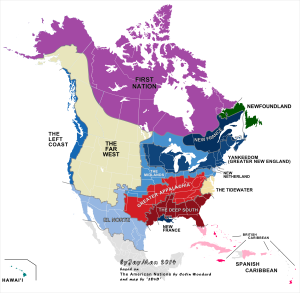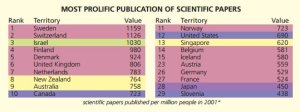
In 1969, Niel Armstrong and Buzz Aldrin planted an American flag on the moon. In 2016, Americans can’t figure out how to not overdose on heroin:
Unconscious addicts are so frequently dumped in the hospital parking lot that administrators developed a special alert system to treat them. Paramedics have plucked overdose victims from roadside ditches, from the Walmart parking lot, and from living rooms across town. It has become routine for children to see a passed-out parent jolted to life with a dose of Narcan.
“Do you know how many houses we go into that the kids are sitting on the couch watching us?” said paramedic Christine Lerussi. …
The despair here echoes across the country. But the opioid crisis is particularly acute in Ohio. Last year, a record 3,050 people in the state died of drug overdoses. Overdoses from the potent opioid fentanyl more than doubled, to 1,155.
Spend a few days in East Liverpool and it’s easy to see why. Drug dealers from out of state flock to the desolate streets, selling powerful highs for $10 or $15 a pop. For too many residents, there’s little else: No jobs. No recreation. No long-term addiction treatment.
No recreation?
The fuck is this shit?
Pardon my language, but I have a tiny computer that fits in my pocket and lets me instantly access almost the entirety of human knowledge, talk to people from all over the globe, and play Angry Birds any time I want to. My TV offers hundreds of entertainment channels 24 hours a day. My kids are so ceaselessly entertaining and cute, you don’t want to get me started about all of the great things they did today. Like the good folks of East Liverpool, I have woods to walk in, rivers to boat in, lakes to fish in, a garden to tend, libraries to enjoy, and neighbors to chat with.
Where, exactly, does “recreation” come from? The magic recreation fairy? Is it dropped from the sky? Does it happen when someone builds a museum and starts showing Broadway musicals? (This is why no one does drugs in NYC, of course.)
Is there something about the soil in East Liverpool that prevents its residents from going on picnics, forming a sewing club, or reading a good book?
OF COURSE NOT.
There was no heroin epidemic here in the ’50s. Was there more “recreation” then?
No, there was far less. We had like 4 TV channels, and they stopped broadcasting at night. People didn’t have microwaves or clothes dryers, so housewives spent hours every day cooking and cleaning. With no AC and no video games, kids ran around outside, climbed trees, or rode their bikes. On Sunday they went to church. They had far less recreation and they still managed not to overdose on heroin in front of their children.
Recreation comes from people. Jobs come from people. Culture comes from people.
The ugly truth of the matter is that people today would rather drug themselves into oblivion than go on living.
From Alabama.com:
South Precinct officers responded just before 9 p.m. to an apartment at Tom Brown Village public housing community on Fifth Court North. Neighbors called 911 after hearing the children crying inside the apartment and checked on them, only to find the mother and father unconscious inside.
When police arrived on the scene, they found the 30-year-old father dead on the kitchen floor. The 35-year-old mother was unresponsive on the couch but did have a pulse. Rescue workers were able to revive her with Narcan, and she was taken to St. Vincent’s Hospital.
South Precinct Lt. David Rockett said officers found four children inside, all of whom belonged to the couple: a 7-year-old girl, a 3-year-old boy, a 2-year-old boy and a 1-month-old girl.
The WaPo reports:
For more than a day, the 7-year-old girl had been trying to wake her parents.
Dutifully, she got dressed in their apartment outside Pittsburgh on Monday morning and went to school, keeping her worries to herself. But on the bus ride home, McKeesport, Pa., police say, she told the driver she’d been unable to rouse the adults in her house.
Inside the home, authorities found the bodies of Christopher Dilly, 26, and Jessica Lally, 25, dead of suspected drug overdoses, according to police.
Also inside the home were three other children — ages 5 years, 3 years and 9 months.
IF YOU CANNOT LIVE FOR YOURSELF, THEN AT LEAST LIVE FOR YOUR CHILDREN. If you are unconscious, overdosed, or dead, what the hell do you think is going to happen to you baby? If it weren’t for the police, these children would all be dead. Oh, and by the way:
…authorities told NBC affiliate WPXI that the double overdose at the 7-year-old’s home was the second they had responded to on that block in less than a day. … ” In the past year alone we lost over 3,500 Pennsylvanians — a thousand more lives taken than the year before.” … Nationwide, opioids such as heroin and prescription pain relievers killed more than 28,000 people in 2014, more than any year on record, according to the Centers for Disease Control and Prevention. At least half of all opioid overdose deaths involved a prescription drug, the CDC said, adding that the number of overdose deaths involving opioids has nearly quadrupled nationwide since 1999.
Want to stop the drug epidemic? Put people who’ve overdosed in the stocks and let everyone throw rotten tomatoes at them. For a second offense, lashings. Drug dealers are serial killers and should be publicly executed. Set a few dealers twisting in the wind, and I guarantee that far fewer people will be willing to sell drugs.
Then stop making excuses, go out into the world, and LIVE.
Or you’re going to be replaced by people who do.
































